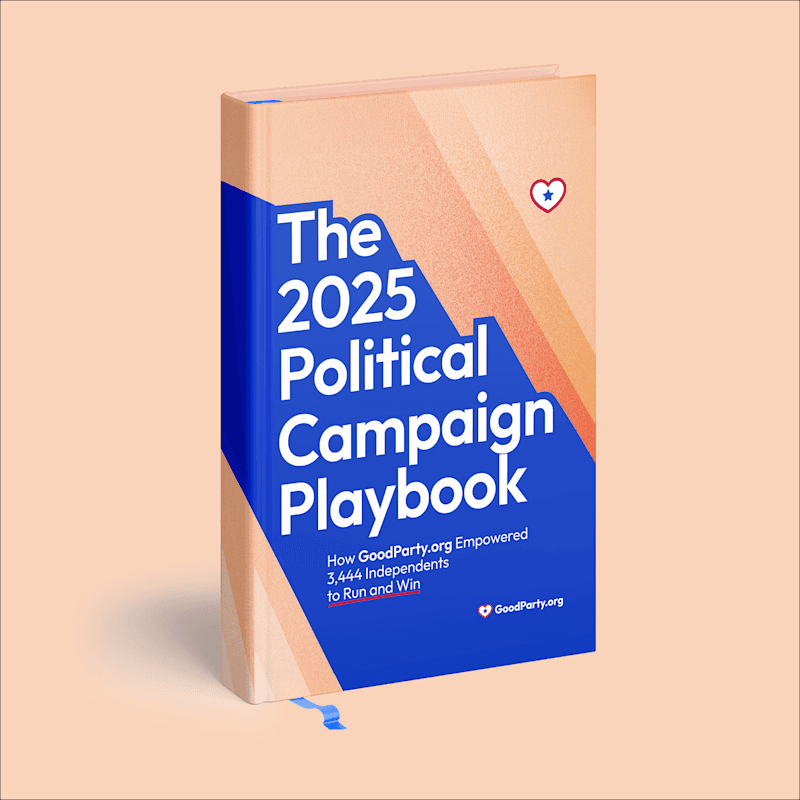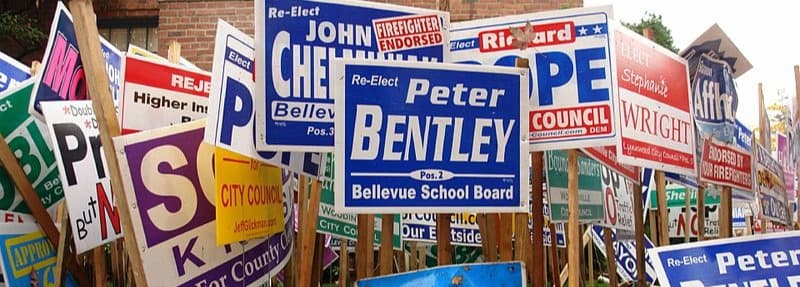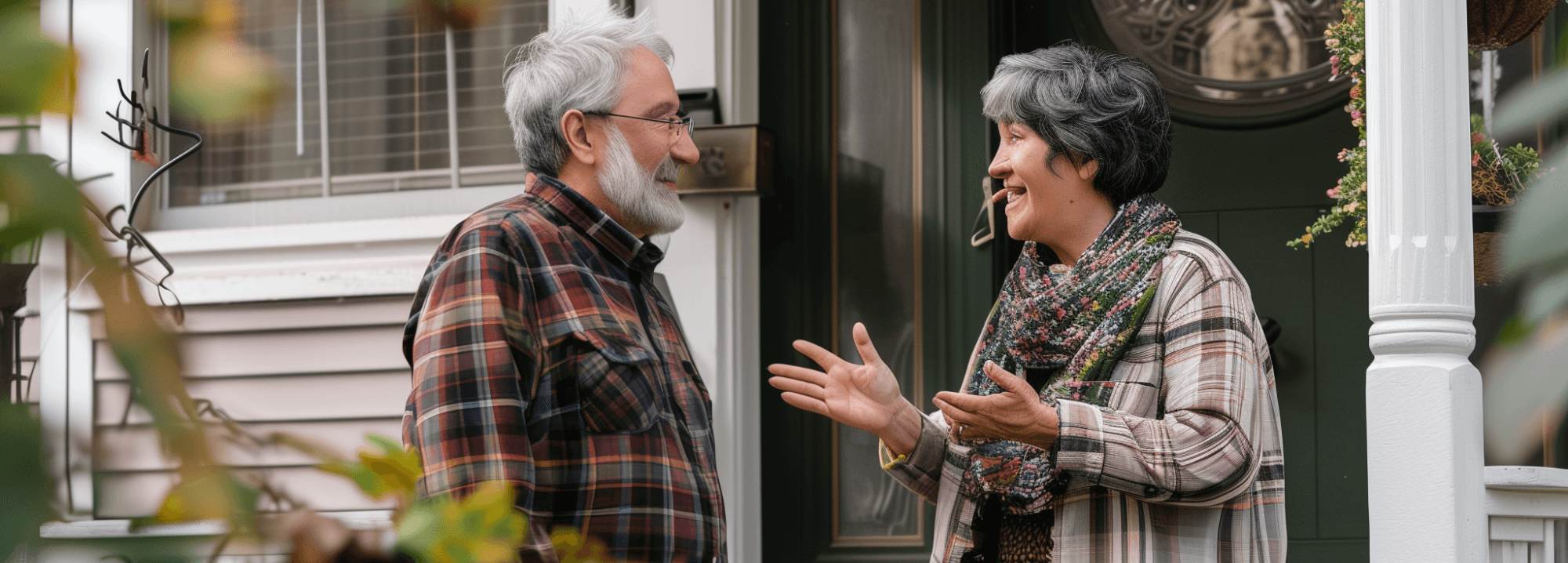
The Complete Guide to Designing Political Campaign Literature
- What Is Political Campaign Literature?
- Best Practices for Designing Impactful Campaign Literature
Campaign literature is a crucial component of any political campaign. It serves as a tangible representation of a candidate’s message, vision, and promises to voters.
Join us as we guide you through a comprehensive overview of what campaign literature entails and some best practices for designing it. We’ll also give you a step-by-step guide to creating and distributing it effectively.
What Is Political Campaign Literature?
Political campaign literature refers to printed materials that are used to communicate your message to voters. They’re an essential tool for building name recognition, outlining your policy positions, and persuading undecided voters to support your campaign.
The most common types of campaign literature are:
Flyers: Single-page documents that provide key information about the candidate and their platform.
Brochures: Folded documents that offer more detailed information than flyers. They often include candidate biographies, policy positions, and endorsements or testimonials.
Pamphlets: Similar to brochures, pamphlets are typically smaller booklets that provide more in-depth information on specific issues.
Door Hangers: Designed to be hung on door knobs, door hangers are an effective way to ensure that campaign literature is seen by residents.
Postcards: Sent via traditional mail, postcards can reach a broad audience. They often include a photo of the candidate and a brief message.
Posters: Larger print materials that can be displayed in public spaces to increase a campaign’s visibility.
Business Cards: Small cards with essential contact information and a brief message or campaign slogan.
Yard Signs: Placed in supporters’ yards, political yard signs help to build name recognition and show community support.
Best Practices for Designing Impactful Campaign Literature
Creating impactful campaign literature requires careful planning and design. Here are some best practices to ensure your materials are effective:
Clear and Concise Messaging: Space on flyers and postcards is limited, so focus on delivering a clear and concise message. Highlight key points and use bullet points to make the information easy to read.
Strong Visuals: Use high-quality images and a clean layout. Try to avoid stock photos and opt for real photos of you or your campaign team in action. A professional design can significantly enhance the credibility and appeal of your campaign literature.
Consistent Branding: Maintain consistency in colors, fonts, and logos across all campaign materials to reinforce your brand.
Call to Action (CTA): Include a clear call to action (CTA). This could be asking voters to visit your website, attend an event, follow your campaign on social media, or simply vote for you. Make it easy for recipients to know what to do next.
Contact Information: Ensure that your contact information is easy to find. Include your website, social media handles, phone number, and email address.
Targeted Content: Segment your voter demographics and tailor your message to the audience. For example, focus on local issues for door hangers distributed in a specific neighborhood.
Testimonials and Endorsements: Include quotes from community leaders or endorsements from trusted organizations to build credibility.
Professional Printing: Use a reputable printer to ensure high-quality materials.
Proofreading: Check for spelling and grammatical errors. Mistakes can undermine your professionalism and credibility.
Simplicity: Avoid clutter. Too much information or too many images can overwhelm the reader.
A Step-by-Step Guide to Creating and Distributing Campaign Literature
Before enacting any of these strategies, it’s important to do some research. You should have a clear understanding of the important issues in your area and the groups or demographics who are most impacted by them.
Once you have identified and segmented prospective voters, you can put together your political campaign literature in a way that’s designed to most effectively carry your message to voters.
Step #1: Plan Your Message
Define the core message you want to convey in your political campaign literature. Consider your key issues, target audience, and the actions you want voters to take.
Step #2: Draft Your Copy
Using a tool like GoodParty.org's AI Campaign Tool can help you draft persuasive, coherent content for your campaign literature. Ensure that your copy is engaging and informative.
Step #3: Design Your Campaign Materials
Work with a graphic designer or use design software to create visually appealing campaign literature. Focus on clarity, consistency, and professionalism in your design.
Step #4: Proofread and Revise
Carefully review your materials for any errors or areas that need improvement. Get feedback from trusted advisors and make any necessary revisions.
Step #5: Print Your Campaign Literature
Select a reliable printing service to produce your campaign materials. High-quality printing is essential for making a good impression on voters.
Step #6: Distribute Your Campaign Literature
There are several effective methods for distributing political campaign literature:
Door-to-Door Canvassing: One of the most effective ways to distribute literature is through door-to-door canvassing. Volunteers can engage with voters, answer questions, and leave campaign literature behind, especially if the voter is not home. This personal touch can significantly increase voter engagement.
Direct Mail: Sending postcards or brochures via direct mail can reach a wide audience. This method is particularly effective for targeting specific demographics or geographic areas.
Community Events: Distribute political campaign literature at local events, such as farmers’ markets, festivals, and town hall meetings. This allows you to reach a large number of people in a short amount of time.
Local Businesses: Ask local businesses if you can leave brochures or flyers in their establishments. This can help increase your campaign’s visibility in the community.
Yard Signs: Use yard signs and posters at supporters’ homes and properties to build name recognition and show community backing.
Social Media Integration: Encourage supporters to follow your social media accounts and share digital versions of your campaign literature, like posters or flyers, on their own profiles. This can expand your reach beyond physical distribution.
Step #7: Track and Evaluate
Monitor the effectiveness of your campaign literature distribution efforts. Track where and how your literature is being distributed and evaluate its impact on voter engagement. Adjust your strategy as needed based on feedback and results.
Pro Tips for Distributing Campaign Literature
Relying on Volunteers
Volunteers are a vital resource for distributing campaign literature. Organize volunteer events, provide training, and ensure they have the materials and information they need to be effective. Appreciate and recognize their efforts regularly to keep them motivated.
Including a Clear CTA
Every piece of campaign literature should have a clear call to action (CTA). Whether it’s asking voters to visit your website, donate to your campaign, or show up at the polls, a strong CTA guides voters on what to do next. Make your CTA prominent and straightforward to increase the likelihood of voter action.
Using AI Tools to Create Campaign Materials
Effective campaign literature is a cornerstone of any successful political campaign. By following best practices in design and distribution, leveraging tools like GoodParty.org's AI Campaign Tool, and relying on a network of dedicated volunteers, you can effectively communicate your message, build community support, and drive voter action.
Remember, every piece of literature is an opportunity to make a lasting impression on a voter — make it count!
You can get started with GoodParty.org’s free AI Campaign Tool by signing up here. You can also book a meeting with our team for a free walkthrough.




